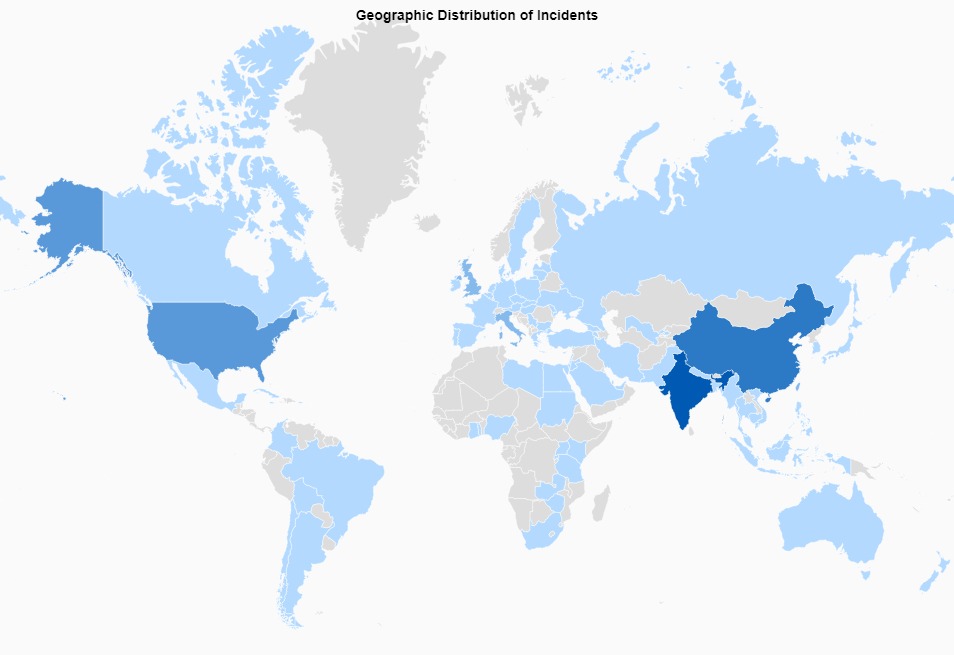When we think about dirty pests, cockroaches are usually the first to come to mind. But while the conditions they thrive in are disgusting, flies breed and feed in the filthiest areas. Their lifestyle means their bodies can be covered in dangerous, potentially disease-inducing pathogens, which can be spread anytime they land on a surface or their body comes into contact with something.
House flies are born as maggots, emerging into their larval stage from tiny eggs laid anywhere decaying organic matter can be found. After splashing about in the grime and decay and consuming just about anything they can find, the larvae leave their food source and crawl around seeking out cool, dry, protected places. A shell forms around the pupae, where they remain for a brief time before turning into adults. This entire process takes less than two weeks from egg to breeding adult. Once they’re adults, house flies take off in search of more decaying organic matter and moisture to lay their eggs in and continue the processes.
Essentially, a house fly spends its entire life cycle either crawling around in filth or flying around to find new sources of filth. Add in the fact that they reproduce rapidly, and it’s easy to see why they’re a food safety threat. But they’re not the only species of fly that plagues food processing facilities, as fruit flies and moth flies are two other incredibly common fly species that love to make food processing facilities a new home.
To prevent flies, the first step is to take a close look at your current integrated pest management (IPM) program and ensure your program focuses on taking a proactive approach to mitigating pest issues. But before discussing the specifics of how to protect a facility from these fly invaders, it is important to know how and why they get into a facility in the first place. Each species has slightly different locations where they’re likely to be found, which should be monitored closely to ensure they don’t become hot spots.
Let’s look at the three most common fly species most likely to plague a food processing facility:
House Flies
House flies are persistent and active. Each time they pause to rest on floors, walls or ceilings, remember they’re potentially dropping off disease-causing pathogens. House flies are known to transfer more than 100 pathogens resulting in ailments like typhoid, tuberculosis, cholera and dysentery. They’ll feed on any moist human food, animal food, garbage, carcasses and just about any other wet or damp organic material. Flies detect a food source and hone in on it, which is why they’ll be looking for a chance to invade your food processing facility.
Moth Flies
Although moth flies feed on organic matter and sewage, they’re found in moist areas coated with nutrient-laden organic material. They are sometimes called drain flies because (you guessed it) they are often found in drains. They love the buildup that sticks around the pipes, and once they start reproducing, they can be a nuisance to eliminate. Usually, you’ll never see drain fly eggs and larvae because they drop irregular masses of egg sacs that hatch into larvae, which then live in the gelatinous film inside drains. From there, they mature into pupae and then flying adults, which is when you’ll start to notice them. This is why regular drain cleaning, with a foaming cleaner, is important in controlling these fly issues.
Fruit Flies
Like drain flies, fruit flies are named aptly. They’re most attracted to rotting or decaying fruit and vegetables, but they also enjoy fermented items like beer, liquor and wine. Aside from the products themselves, fruit flies may also breed and develop in drains, garbage disposals, trash cans and even mop buckets. Fruit flies are also known for being a major risk to contaminate food with bacteria and other pathogens. If there is food waste present, fruit flies want to be there. Finding their source and eliminating it is especially important for successful control.
Now, the most important strategy for preventing flies—and most pests in general—is to implement a robust sanitation plan. Flies are looking for food and water to survive, so any source of organic matter or moisture is going to be likely to attract them. And once they’re inside, flies are likely to stay there. Most won’t travel more than a few hundred feet from the spot they were born in their entire lifetime. While small flies are more likely to be found breeding inside facilities, large flies are likely to be breeding outside and flying inside structures.
Consider these tips, as they can help you keep flies and other pest threats away:
- Make sanitation a priority. Sanitation is one of the most important ways to help reduce pests. Flies love any damp organic matter they can find, so clean up messes as soon as they occur. And don’t forget to take out the trash on a regular basis. That means at least daily. Don’t miss cleaning the insides of trash bins, liners often leak and a buildup of material can be present underneath them.
- Swap outdoor lighting. Use outdoor sodium-vapor lights, especially near entrances/exits to the inside of your facility. Lights can be placed away from the building to draw flies away and reduce populations at the same time. Ensure that inside lights don’t shine out at night and attract night flying insects and flies in.
- Install automatic doors. Automatic doors give flying pests a smaller window of opportunity to get indoors by reducing the amount of time that doors remain open. For greater effectiveness, install two sets of automatic doors that only open once the other is closed to create a vestibule. Installing air curtains behind these doors can also help block pests from finding a way inside. Air curtains alone aren’t perfect, but they can help some.
- Inspect loading and unloading areas. Shipment areas are a prime location for flying pests to wander in. Make sure all doors form a tight seal when shut and are not allowed to stay open for extended periods of time.
- Seal cracks and crevices. Just about any gap, no matter how small, can be big enough for flies to find a way inside. Door sweeps and weather stripping can be installed to minimize these gaps. You can also use weather-resistant caulk to seal gaps on the exterior of your building, although this will likely take some time and a team effort at larger facilities.
- Clean drains on a regular basis. Even if you don’t have a lot of “wet” processing, all drains, including break room, restroom, and locker room drains need to be cleaned. Small flies can develop in as little as seven days, so weekly cleaning is a must.
Implement these sanitation and exclusion efforts as part of your ongoing IPM program. With flies, sanitation cannot be stressed enough. They are living and breeding in conditions that need to be cleaned up, inside and outside. As with any pest issues, it is important to contact a pest management professional if it seems things are getting out of hand. If you’re seeing flies daily inside the building, that’s probably a good sign that your products may be at risk!


















